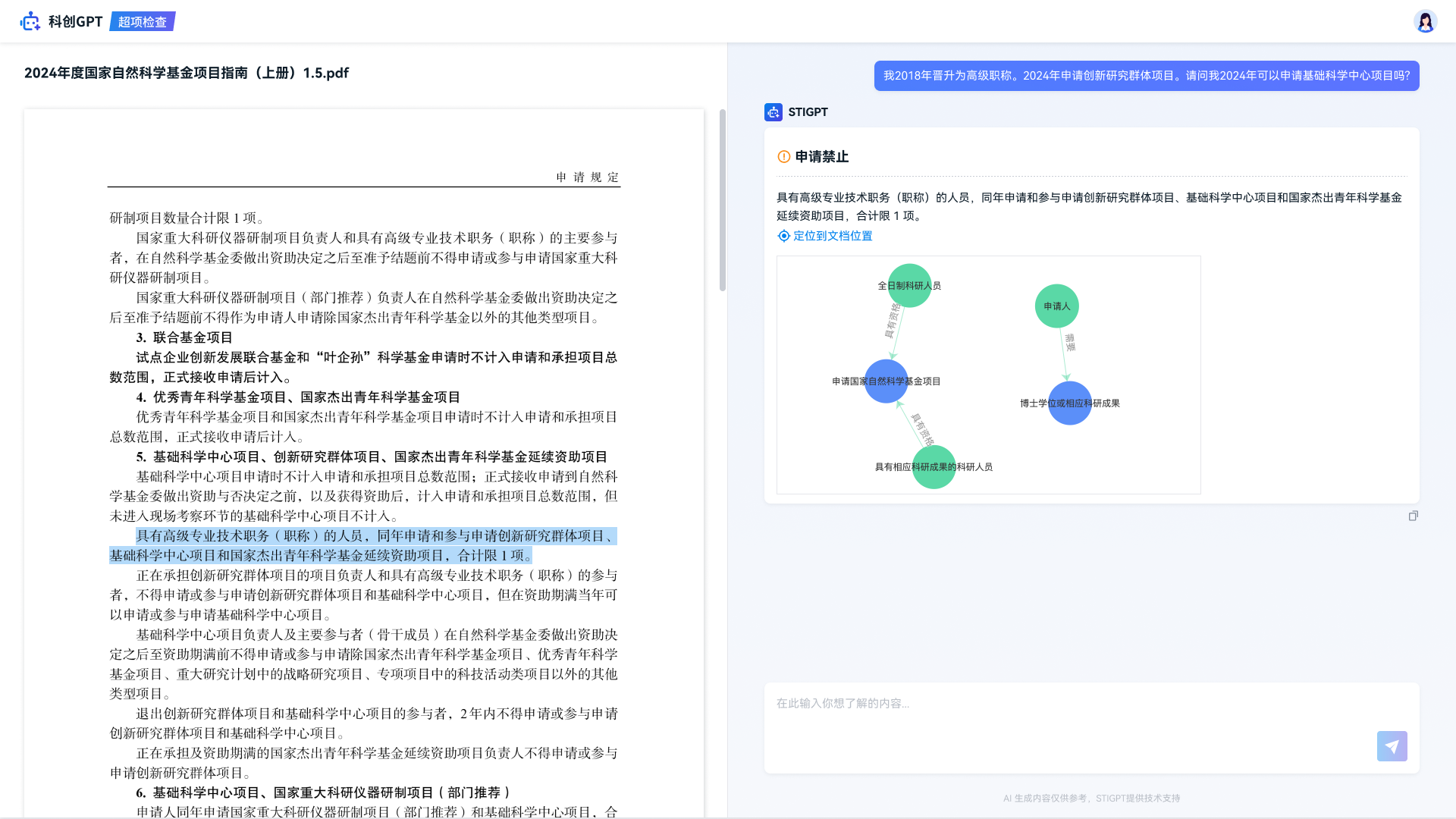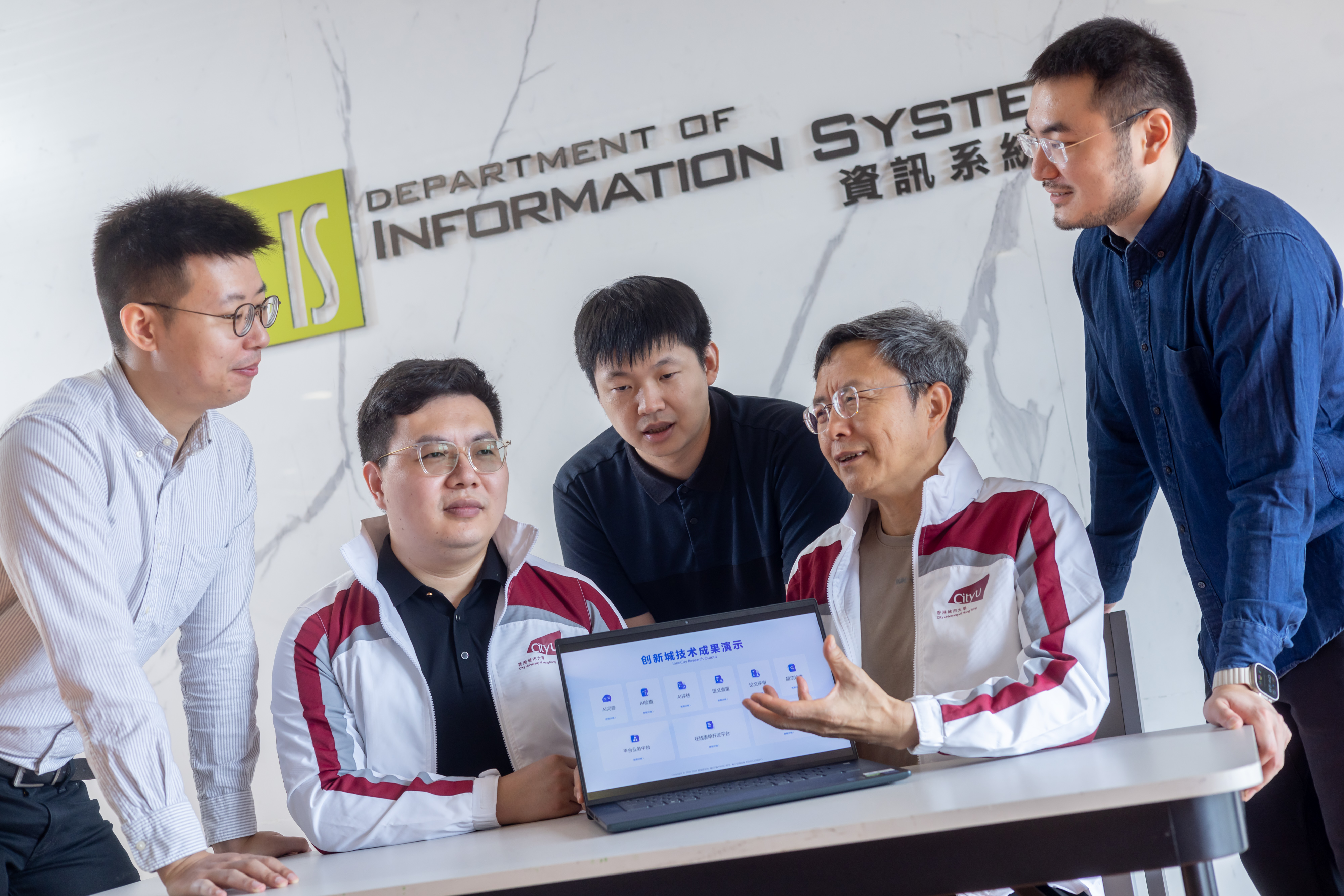Unleashing the Power of Generative AI on Smart Collaborative Innovation Network Platform to Empower Research and Technology Innovation
A dedicated team of researchers from City University of Hong Kong (CityUHK) is pioneering cutting-edge generative artificial intelligence (GenAI) technologies on a collaborative innovation network platform, aimed at transforming science, technology and innovation (STI) services to empower research and innovation. This innovative project is set to revolutionise the related service delivery by creating a secure GenAI model and digitally transforming processes, thereby facilitating research development and technology innovation, while enhancing data security and service efficiency.
STI services, including research management, research achievement promotion and technology transfer, are pivotal in driving technology innovation. However, data security and personal privacy concerns have resulted in fragmented systems for STI services, leading to the problem of information silos.

To address these challenges, Professor Ma Jian and his team in the Department of Information Systems at CityUHK developed and have continuously improved ScholarMate (scholarmate.com), a leading professional collaborative innovation network platform in China, since 2007. With over 8 million registered users and a repository of 78 million research outputs, Scholarmate connects government funding agencies, universities, research institutes and technology companies, fostering collaboration and knowledge sharing.
Building on this successful achievement, Professor Ma’s team is now spearheading the development of a new federated learning technology, integrated with research knowledge graphs and large language models (LLMs) to digitally transform STI services and unleash the power of generative AI. The project recently secured funding from the Research, Academic and Industry Sectors One-plus Scheme (RAISe+ Scheme), launched by the Innovation and Technology Commission of the HKSAR Government.
The primary objective of the project is to create a smart collaborative innovation network platform with Generative AI capabilities that prioritises data security, privacy and operational efficiency.
In particular, it will focus on creating comprehensive research knowledge graphs to map relationships among researchers, projects, research papers, patents and other relevant entities in universities, research institutes and technology companies around the world. By organising data according to the national standards of research disciplines and related emerging industries, the research knowledge graph will form a comprehensive, domain-specific knowledge base.

Leveraging the large volume of papers and patents from the collaborative innovation network platform, the team will further train and fine-tune a domain-specific large language model, called STIGPT (GPT for Science, Technology, and Innovation). This generative AI model will provide intelligent assistant services for knowledge co-creation using semantic search, intelligent recommendations and personalised content generation for research institutions and researchers.
At the same time, the CityUHK team aims to develop and implement “federated learning technologies”, which are decentralised approaches to training large language models, to facilitate joint training and fine-tuning of research knowledge graphs and large language models for users on the collaborative innovation network platform. The federated learning technologies will ensure data security and personal privacy protection while enhancing model accuracy and adaptability, providing users with personalised, domain-specific STI services through STIGPT.
The team also plans to develop a low-code system development platform, which can empower institutional users to implement digital transformation solutions with minimal programming effort, thereby significantly lowering adoption barriers and enhancing operational efficiency.
The research team envisions that by integrating STIGPT with ScholarMate, the project can build the first smart collaborative innovation network platform in the world that connects researchers from universities and industry to co-create IP knowledge. It will also drive and accelerate the digital transformation of various STI services, including smart research management, academic conference publishing, research marketing and technology transfer services. These transformations will lead to more efficient decision-making, streamline processes, and enhance collaboration among stakeholders.
“By leveraging generative AI technologies on a collaborative innovation network platform, this project will help accelerate the pace of research and innovation,” Professor Ma elucidated on the potential impact of the project.

The market potential for STI services is immense, with significant investments in research and development in the Mainland and rest of the world. With the support of HK Tech 300, a flagship innovation and entrepreneurship programme at CityUHK, the team established a start-up, called InnoCity.com, to commercialise the project’s research outcomes, focusing on the use of generative AI technologies for technology transfer, thus tapping into a promising market.
“In alignment with the government’s policy to position Hong Kong as an international innovation and technology hub, this project aims to build a smart collaborative innovation network platform with generative AI capabilities. Its goal is to facilitate knowledge co-creation among industry, academia and research users while enhancing the quality and efficiency of STI Services,” said Professor Ma.